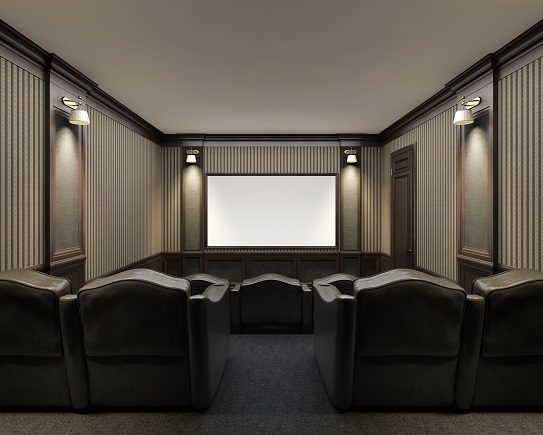You don’t have to be a lottery winner to have a home theater in your house. Setting up a home theater isn’t as expensive as it sounds. It’s actually affordable and easy to set up. Everyone should have a theater in their house. It makes your video entertainment much more entertaining. You’ll have better pictures along with better sound. You don’t need much equipment to set it up. All you need is a TV, a receiver, a DVD or Blu-ray player, speakers, and cables.

Getting Started
You’ll first need to decide what room you want to use as your theater. You can use any room, basement, or attic. Stand in the room and clap your hands to check your room’s acoustics.
If you hear a ringing after the clap, you’ll need to optimize the room to get the best sound.
Try to balance the hard and reflecting surfaces in the room, like bare walls, with soft surfaces, like bookshelves filled with books or a carpeted floor.
The TV
Once you choose the room, think about the TV size you want.
If you don’t have one already, you should get an HDTV.
You should place the TV in the center of the room. No one should have to strain their necks to see.
The Receiver
You’ll need a good receiver for your theater. Your receiver will take the signal from the DVD or Blu-ray player and send the video to the TV and the audio the speakers.
Receivers come with tons of different features and price tags. To avoid confusion, buy a receiver that meets your needs. If a feature seems tempting, but you don’t think you’ll use it in the near future, don’t buy that receiver.
Find one that better meets your needs.
You could connect the DVD player directly to the TV, but a receiver allows for a more organized and manageable system.
The Speakers
Speakers will make the video’s sound much better. The type of speakers you buy depends on your room’s size and your budget.
Putting It All Together
You don’t need to be an expert to put everything together. Set aside a few hours and get all your equipment and tools ready. Then, get to work.
First place everything where you want it to go. Find where you want the TV to be, the speakers, and the receiver.
You’ll connect your speakers’ cables to the audio outputs on your receiver. And then connect your video sources, either your Blu-ray or DVD player, to the video inputs on the receiver.
Then, connect the receiver’s HDMI output to the TV.
You can keep all the cables organized with twist ties and labels.
Need help? Contact us!


